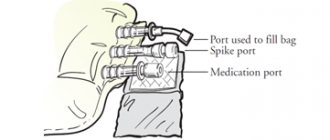Medicinal and herbal diuretics.
September 23, 2022
43252
4.6
1
Content
- How to choose a diuretic
- What are the types of diuretics?
- Classes of diuretics and indications for their use
- The best diuretics
- Hydrochlorothiazide
- Furosemide
- Indapamide
- Veroshpiron
- Torasemide
- Triampur compositum
- Diuver
- Dog-rose fruit
- Diuretic collection
- Juniper fruits
The doctor prescribes diuretics for various edema, hypertension, for the prevention of kidney stones, etc. It is no secret that some women even try to lose weight with the help of diuretics, but this is dangerous to health. The fact is that diuretics, together with liquid, remove potassium from the body - muscle contraction (including the heart muscle) is disrupted. That is why such drugs should be prescribed exclusively by a doctor, taking into account the underlying disease, possible contraindications and side effects.
Read also How to treat dehydration: 5 solutions for rehydration What drugs for dehydration are most often prescribed by doctors?
Undesirable effects of diuretics
Disorders associated with micronutrient loss
Diuretics remove ions of valuable chemical compounds involved in metabolism from the body. Imbalance of electrolytes leads to side effects: arrhythmia, decreased blood pressure, impotence.
Disadvantages of using diuretics:
- A sharp decrease in potassium levels;
- A decrease in magnesium levels is manifested when taking loop diuretics, less so when taking thiazide diuretics; potassium-sparing diuretics do not remove it at all;
- Decrease in calcium levels - largely eliminated by loop diuretics (up to 30%), potassium-sparing diuretics accumulate calcium, leading to hypercalcemia;
- A decrease in sodium levels is observed during self-medication with diuretics, symptoms: weakness, nausea, drowsiness.
Exceeding the dosage of diuretics can result in mental disorders and coma.
Arrhythmia, metabolic disorders
Long-term use of thiazide diuretics against the background of arterial hypertension can lead to arrhythmia and sudden coronary death.
Factors provoking arrhythmia:
- Hypokalemia leading to myocardial instability;
- Left ventricular hypertrophy;
- Psycho-emotional stress;
Types of diuretics and typical side effects:
Other side effects of diuretics:
- Reduction in left ventricular myocardial mass by up to 11% (Indalamide);
- An increase in the level of uric acid in the blood, the development of gout, chronic nephropathy (typical for patients with excess body weight);
- Persistent increase in glucose levels (hyperlipidemia), leading to diabetes mellitus;
- Disorders of the lipid spectrum (hyperlipidemia), leading to an increase in the level of lipoproteins in the blood, normalize after discontinuation of the drugs;
- Acid-base imbalance leading to metabolic alkalosis;
- Development of hyperkalemia and metabolic acidosis when using potassium-sparing diuretics.
How to choose a diuretic
There are specific factors to consider if you choose a diuretic.
- Speed of action.
There are diuretics for emergency use: if you need to quickly lower high blood pressure (used in combination with other drugs), remove morning puffiness under the eyes. You should not take such medications often because they are addictive. Long-acting diuretics are prescribed to treat hypertension and edema associated with poor heart and liver function. - Pregnancy and breastfeeding.
Any diuretic medications are prohibited for pregnant and lactating women. And only in cases where a pregnant or lactating woman has a threat to her health and life, is it possible to use them. Usually this phrase sounds like “the benefit to the mother outweighs the risk to the fetus.” The exception is practically harmless herbal diuretics, but a woman should talk to her doctor before using them. - Tendency to allergies.
People with allergies may experience an undesirable reaction to both the active ingredient of the diuretic drug and its minor components. If you are allergic, consult your doctor before treatment.
In addition to diuretic medications, mild herbal remedies are often used. They are usually prescribed in the complex treatment of cystitis, urethritis, etc. Herbal diuretics not only remove excess water, but also relieve inflammation.
Drinking diuretics for weight loss is dangerous - the heart muscle suffers
Photos from open sources
Causes of edema
When kidney function is impaired, water and salt are retained in the body, which leads to edema. In addition, with some kidney diseases, the amount of protein in the blood decreases (it is excreted in the urine), which also causes swelling.
If there is vascular disease from the heart, then blood and lymph tend to accumulate and put pressure on the walls of blood vessels. If the permeability of the vein walls is increased, then water will accumulate in the body. There are diseases that lead to the accumulation of water: thrombophlebitis, CVI, varicose veins; protein deficiency (hypoproteinemia); renal failure; hormonal imbalance; allergic reactions; heart disease; diabetes; cirrhosis of the liver; lymphedema; injuries.
One of the common causes of edema is insufficient lymphatic drainage, when fluid does not flow out of the tissues at the proper rate. Lymphatic vessels have valves and muscles that regulate the flow of lymph. But with age, in case of poor heredity or with additional stress (for example, during pregnancy), they cease to cope with their task - and edema forms.
We recommend keeping a diary and recording the circumference of your right and left ankle at different times, as well as the circumstances under which the swelling appeared, such as hot weather. This will help to identify under what circumstances the swelling appeared and what is causing it. The cause of the development of lymphedema can be a constant static load when a person is sitting or standing. At the slightest sign of any swelling, you should consult a phlebologist, lymphologist or therapist.
What are the types of diuretics?
All diuretic drugs are divided into several categories: according to their spectrum of use and mechanism of action.
- Loop diuretics.
These drugs have the strongest effect (they begin to act literally a few minutes after administration), but the effect ends just as quickly. Such drugs are well suited for the treatment of hypertension and heart failure. But loop diuretics have a significant disadvantage - along with water, they remove potassium from the body, which is fraught with the development of arrhythmia. - Thiazide diuretics.
Another effective diuretic drug. They not only get rid of excess fluid, but also dilate peripheral vessels. Thiazide diuretics also reduce the response of blood vessels to adrenaline, so they spasm less. Such diuretics are also prescribed for the treatment of urolithiasis. Among the “side effects” are the excretion of potassium and an increase in uric acid, which can then accumulate in the joints and cause gout. - Potassium-sparing diuretics.
Such diuretics do not remove potassium from the body, protecting the patient from various heart complications. But these drugs are not as potent as the previous ones. - Osmotic diuretics.
This group of drugs reduces blood plasma pressure - excess water is quickly removed from the tissues, swelling goes away. The pressure in the tissues and in the plasma becomes the same. Typically, osmotic diuretics are prescribed to relieve swelling of the brain, lungs, and high intraocular or intracranial pressure.
Problems of prescribing modern diuretics in patients with CHF
Vladimir Trofimovich Ivashkin , academician of the Russian Academy of Medical Sciences, Doctor of Medical Sciences:
— We will ask Professor Grigory Pavlovich Arutyunov to tell us about adequate diuretic therapy for chronic heart failure. Please, Grigory Pavlovich.
00:13
Arutyunov Grigory Pavlovich , Doctor of Medical Sciences, Professor:
— Thank you very much, Vladimir Trofimovich.
Dear Colleagues. Chronic heart failure syndrome is a very well known syndrome since ancient times. Times change, but there is always a big problem in describing this syndrome, in describing the symptoms characteristic of this syndrome.
(Slide show).
Modern clinical portrait of a patient suffering from circulatory failure. Green bars indicate doctors' opinions. Red bars – this is what happens in real clinical practice. Like many centuries ago, for many decades, the first positions are still the feeling of lack of air and clearly pronounced swelling that occurs in these patients.
Whatever new symptoms have appeared in recent years (for example, fatigue - a superbly described syndrome in the last decades of the 20th century), the special significance of old symptoms remains, the fight against which, in fact, is clinically significant in preserving the lives of our patients.
But the word “edema” in the minds of an internist or therapist is primarily associated with the word “diuretic drugs.”
As modern recommendations say, when diuretics should appear in the treatment regimen for circulatory failure. Let's take the simplest patients, the mildest. Circulatory failure, functional class I-II, also sinus rhythm.
Start-up therapy always begins with an ACE inhibitor; in case of intolerance, it is an ARA. Only then, when ACE inhibitors are titrated, in the presence of edema, the therapist has the right to raise the question of diuretic therapy.
If patients have atrial fibrillation, even in this situation, diuretics are not the first line. These are still drugs that correct the patient’s neurohormonal profile. These are glycosides for atrial fibrillation. Only when the rhythm is controlled with titrated drugs does the issue of diuretics come on the agenda.
In more severe patients, functional class III-IV, but still maintaining sinus rhythm, the therapist has the right to administer diuretics for the first time, the first line of drugs.
In patients with atrial fibrillation of functional class III-IV, three drugs are used in treatment. These are ACE inhibitors, diuretics (please note, first-line diuretics) and glycosides.
02:47
We have talked about the first conditional place for diuretics. Let's start with the first law of prescribing diuretics for a therapist. Without edema, there is no diuretic therapy. If there is no material substrate (no edema), the therapist should not think about diuretic therapy in the treatment of CHF.
However, edema itself requires the therapist to understand what kind of edema it is. Let us describe the swelling that requires diuretics. Let us remember Botkin, his description of edema. Patients with circulatory failure must obey the law of symmetry. Symmetrical swelling. Feel the swelling - it should be dense and cold. Check their color - they should be blue.
So, dense, cold, symmetrical swelling is swelling caused by hydrostatic problems and circulatory failure. Then diuretics come on the agenda.
When the law of symmetry is violated, edema becomes one-sided, and there is no place for diuretics. This is a surgical problem that requires a solution, always urgently.
The therapist meaningfully looked at the swelling, felt it, assessed its color, temperature and made a decision on prescribing diuretics.
What do we achieve by prescribing diuretics? First of all, we will influence the removal of sodium and sodium-related chlorine from the body. Since the volume of extracellular fluid is regulated mainly by the content of sodium and chlorine in the body, we will influence the exit of fluid from the body with primary, then secondary urine.
04:41
The law of the power of diuretics. The closer to the nephron, the stronger the effect of the diuretic drug. There are exceptions to this rule. Diacarb does not obey this rule. It acts next to the nephron. But this is not a powerful diuretic drug.
Closest to the level of the loop, loop diuretics will act (hence their name). Thiazide diuretics will continue to work. Potassium-sparing diuretics will act even further. So, we remember the first basic rule. The closer to the nephron, the more powerful the effect of the diuretic drug, with the only exception for the drug Diacarb.
Let's look at the second and third laws. They should always be in the therapist's working memory. Diuretics should not be prescribed discretely. Prescribing diuretics 1-2 times a week, on even or odd days, does not benefit the patient. On the contrary, they begin to shake up the patient’s neurohormonal profile.
What will happen to the patient when he takes diuretics irregularly. For a certain amount of time, the volume of urine produced will increase sharply. The neurohormonal profile will change. In response to the excreted fluid, oversynthesis of angiotensin II and norepinephrine will begin. You will begin to improve your neurohormonal profile.
Diuretics are prescribed daily in small doses, but in no case discretely, which today should not be considered at all in treatment regimens for circulatory failure.
The question of the history of the development of diuretics is very interesting. At the dawn of medicine, herbal remedies were diuretics. Then, quite by accident, during the period of treatment for syphilis, it was discovered that mercury (mercury ointment was used in the treatment of syphilis) has a diuretic effect. Of course, the diuretic drug turned out to be surprisingly toxic.
The era of diuretics is the post-war era. After World War II, when the first effective diuretics were synthesized, which were not so toxic and were clinically highly effective.
The process of synthesizing new drugs has not been completed. Today in the 20th century we are talking about three new classes of diuretics. This is a process that will probably evolve all the time.
But we remembered the history of the synthesis of diuretics only in order to approach the fourth law of prescribing diuretics. Diuretics are prescribed by the therapist according to the principle: from weakest to strongest. This is justified, because the stronger the diuretic effect, the stronger the diuretic drug, the greater its side effects, the greater its toxic effect.
07:40
So, let's look at a diuretic drug that is much weaker than loop diuretics.
This is a thiazide diuretic. It will, first of all, reduce the reabsorption of chlorine. This is his most important thing. Together with chlorine, it will have a passive effect on the excretion of sodium and sodium-bound water.
It is very important to see that the group of thiazide diuretics that we so easily talk about is a very large group. It includes the well-known drug Indapamide, Hydrochlorothiazide, Chlorthalidone, which is better known in other countries than here. However, these are completely different drugs.
This difference in diuretics means that the physician must be aware of the half-life. These half-lives are too different to be consistent across this group. The half-life of a diuretic drug is the most important indicator of a diuretic drug. The longer the half-life, the greater the toxic effect of the diuretic, the less its effect on the neurohormonal profile of our patient.
(Slide show).
Let's look at thiazide diuretics.
Well defined white line. One of the most important side effects of the thiazide diuretic drug (two arrows below the potassium level) is high potassium output. Consequently, high doses of thiazide diuretics will always be fraught with the development of severe arrhythmias. Sodium is excreted significantly less than potassium. This is a very important point.
Finally, thiazide diuretics have a rather toxic effect on the glomerular filtration rate.
09:20
Side effects. The discussion about the dose of thiazide diuretics ended today. 12.5 mg taken with ACE inhibitors is considered safe. Doses lower than 12.5 mg are safe. This is a very important find for us. But we remember that thiazide diuretics will interfere with the lipid spectrum, affect cholesterol levels, and, unfortunately, have a negative effect on blood glucose levels in high doses.
Application. Here the therapist must remember a simple rule. The worse the kidney function, the lower the glomerular filtration rate, the less effective thiazide diuretics. At a figure of 40 ml/min. (glomerular filtration rate calculated by Cockcroft-Gault or MDRD formula) thiazide diuretics are practically ineffective. This is a very important point when we build a daily treatment regimen for patients.
Loop diuretics are much more effective than thiazide diuretics. The point of action of a loop diuretic is the thick segment of the ascending limb of the loop of Henle. This site will reabsorb 25% of the filtered sodium. If we block the entry of sodium back, then water will leave along with the sodium.
Why are loop diuretics so effective? Along with sodium, other electrolytes will also leave. We are talking about calcium and magnesium. High doses will still interfere with the electrolyte balance and may cause rhythm disturbances in the patient.
A loop diuretic removes sodium much more than a thiazide diuretic, but at the same time it also affects the level of potassium excretion. Any diuretic drug, interfering with the electrolyte balance, will be fraught with rhythm disturbances.
Let's not forget that a large volume of water leaves along with the excreted sodium. Therefore, there will be a direct effect on hematocrit. If you are treating a bedridden patient, then ideal conditions will be created for deep vein thrombosis of the leg. Loop diuretics in high doses will always produce high levels of water excreted from the body. The therapist should always keep in mind the high probability of not only rhythm disturbances, but also thrombosis of the deep veins of the leg with possible embolic syndrome in the pulmonary artery.
Toxic effect. The most important indicator on which the patient’s life expectancy largely depends is the glomerular filtration rate. There are no negative effects here with moderate doses. However, there will be a sharp decrease in glomerular filtration rate with high doses of loop diuretics.
12:32
Let's come to the class of loop diuretics.
They are also very different from each other. These are ethacrynic acid, Furosemide and Torasemide. The main indicator by which they differ is the half-life. The second indicator is the metabolism of the diuretic drug. The more a diuretic drug is excreted through the kidney, the more toxic and negative its effect, especially in patients with initially altered kidney function (as in our patients with circulatory failure).
I would like to draw your attention to the doses that are recommended by World Guidelines for administration, for example, Furosemide. Oral, of course, taking 40 mg, 160 mg is not an everyday practice dose, but such practice exists in the world. We must be prepared that doses of loop diuretics will not pass without a trace.
Where will the negative effect of high doses be if taken daily or discretely? If we block the absorption of sodium, then we must clearly remember that after stopping the circulation of the drug in the blood, unfortunately, rebound syndrome will occur. This will be post-diuretic reabsorption. The amount of sodium that will be absorbed from primary urine will increase sharply.
The half-life of the diuretic drug becomes dominant. We should aim for a long half-life to reduce the syndrome of increased post-diuretic reabsorption. This is the first one. But if more sodium is absorbed and the cells are not ready for it, they will die.
Second point. We blocked sodium absorption by 25%. This means that sodium has moved further along the tubules. Unfortunately, cells in distant sections are not ready for such an amount of sodium. This will lead to direct toxic damage.
The third point that the therapist should always remember is the glomerular filtration rate. The lower it is, the higher the concentration at usual doses of the drug, the greater the direct toxic effect of the diuretic drug. We must keep this direct toxic effect of a diuretic drug in our working memory, because it worsens the patient’s condition and shakes his neurohormonal profile.
Finally, remember that Furosemide is the main drug in this group. 65% of it is excreted by the kidneys. Let's remember this number. This is a very important number. It is very high, because Torasemide will be excreted significantly less through the kidney. This becomes important for the therapist when choosing long-term, lifelong therapy with diuretics.
15:21
The main side effects of diuretics. The first and constant effect is the effect on the activity of the renin-angiotensin-aldosterone system. Diuretic therapy will always cause angiotensin II activity to increase and a cascade will follow that will cause high angiotensin II levels. General peripheral vascular resistance will increase, sodium reabsorption will increase, leading to myocardial hypertrophy and hypertrophy of smooth muscle elements.
The second point is the nephrotoxic effect. Any diuretic drug does not remain indifferent to the kidney. It affects the kidney. Finally, we must remember that we are reducing the patient’s quality of life. After the prescription of a diuretic drug, the number of urinations increases. This is significant.
Imagine a real working class 2 patient to whom you have prescribed a diuretic. After taking a diuretic in the morning, the number of urination increases for several hours. At this time he must go to work. We are creating parameters that will worsen his quality of life.
For a very long time we knew that diuretics do not increase life expectancy. According to meta-analyses, they led to an even greater likelihood of deaths, unfortunately.
This was the case until a key study was carried out with the drug Torasemide. For the first time, diuretics have been shown to reduce the risk of death in patients with circulatory failure.
17:05
So, the patient received a loop diuretic. However, you see that a certain pattern occurs: the therapist is unable to achieve adequate urine output. What should a therapist do for a patient with circulatory failure. First of all, think about the pH of your urine. We need to acidify the urine.
It is well known that for this purpose there is a diuretic drug from the “reserve group”. We are talking about the drug Diacarb. Prescribing Diacarb for a short course of 5-7 days changes the pH of urine and increases the effectiveness of diuretic therapy with loop diuretics.
This is also a very interesting story about the appearance of Acetozolamide. It was a drug that actually came out of antibiotics. No one will remember it now as an antibiotic. But this is a very interesting diuretic drug, which primarily affects the pH of urine, helping loop diuretics to act.
We are approaching the drugs with the weakest diuretic effect. These are mineralcorticoids. There are two drugs. Spironolactone is justified. Eplerenone is a bit arbitrary. Eplerenone is an aldosterone receptor antagonist with a diuretic effect.
They differ in only one thing. Eplerenone differs from Spironolactone in that it has two radicals that have a sexual effect cut off. Every tenth man on Spironolactone developed gynecomastia. Eplerenone does not have this effect. This is a very interesting connection.
This is a drug that is not considered as an independent diuretic drug, but as a drug added to an already existing diuretic regimen. In normal doses there is no toxic effect. You need to remember the prescription regimen for this drug.
When large doses are used. When the therapist consciously uses large doses. Then, when there is circulatory decompensation and conventional therapy with loop diuretics does not allow “wetting” the patient and achieving a lasting diuretic effect (then large doses are justified).
There are more commonly prescribed smaller doses (25 – 50 mg). These are doses that are prescribed continuously, for life. For a patient with functional class III-IV, since there we achieve not so much a diuretic effect (I beg you to pay attention to this), there we achieve the effect of blocking the D-position of collagens.
This is the first time we are talking about the additional effect of a diuretic drug that does not relate to the kidney at all. We are talking about blocking the D-position of collagen in the body of a person suffering from circulatory failure.
19:50
Let's return to the class of diuretics. They all vary. First of all, we pay attention to half-lives. It was shown in volunteers, young people, that Torasemide has the highest half-life. The higher the half-life, the safer the diuretic.
What we should remember from the pharmacokinetics of Torasemide. The most important drug. Where the use of, for example, Furosemide is ineffective, Torasemide will be more effective.
The long half-life helps you remember two things. It can be used in patients with initially altered kidney function. In an elderly patient, there is no need to modify the dosage.
Let's remember the most important thing. 80% of administered Torasemide is metabolized in the liver. This means that only 20% is excreted through the kidney. This means that this drug can be used in patients with inherently altered kidney function. This sets Torasemide apart from the entire class of loop diuretics, making it safe and widely used.
What does Torasemide do? Look at the word "aldosterone". It's a hormone. Locally in the kidney, due to the fact that the patient has circulatory failure, the renin-angiotensin-aldosterone system turned on. Aldosterone, in addition to affecting sodium levels, will affect local synthesis and D-position of collagen. How serious is this? Let's ask this question and see the answer a little later.
The concentration of potassium and magnesium does not show a peak-like decrease. This means there is no need to expect, or at least the probability of severe rhythm disturbances will not be very high.
21:41
One more thing. The most important thing for the patient. He knows about the level of potassium and sodium, but he does not clearly see the amount of urination that occurs after taking a diuretic drug. Torasemide has a smooth line. It is very important. There will be no sharp deterioration in the patient's quality of life after taking this diuretic drug.
The left ventricular myocardial mass index decreases. Let's ask the question: why? We asked the second question. Why does the mass of the left ventricular myocardium decrease and why is it necessary to influence the level of collagen? Easy enough to explain. Transmitral blood flow actually improves because you change the volume of circulating blood. It's easy to explain. But how to explain the left ventricular myocardial mass index?
Let's look at one more thing - hormones. The circulating blood volume changed, and brain natriuretic peptide decreased. It's clear. But what happened to aldosterone. The diuretic drug Torasemide, in addition to its diuretic effect, has a direct effect on the level of aldosterone activity.
What does this lead to? First of all, to reduce fibrosis. When you and I were born, for each of us the distance between the capillaries and muscle bundles of the myocardium was determined genetically. This distance, which ensured an even supply of nutrients and oxygen, was guaranteed by the amount of collagen between the muscle bundles.
At a young age, thin and delicate threads are collagen. A patient with circulatory failure has an intravital biopsy sample. Collagen cables that are deposited in the myocardium push the bundles apart, making the myocardium thick and electrically unstable. This is, of course, extremely bad.
A diuretic that can not only reduce circulating blood volume but also affect this D-position of collagen will be very important for us.
(Slide show).
Powerful pink fields at the top are on Furosemide. The absence of pink fields at the bottom is on Thorasemid. There is no collagen not only in the kidney, but also in the myocardium. What gives such an effect of using Torasemide. We chose Torasemide from a whole class of loop diuretics. Reliably reduces hospitalization. The total number of hospitalizations is decreasing. The most important thing is that the average patient stay in bed is reduced.
Why are these numbers important to us? This is not just a mechanical reduction in the patient's stay in the hospital. These include fewer deep vein thromboses, less impact on nosocomial infections, and fewer pulmonary embolisms.
24:29
The patient was treated with Furosemide and then switched to Torasemide. Will we succeed? Yes. The use of torasemide after long-term therapy led to a sharp decrease in the number of hospitalizations. This is an essential thing.
For the first time, it was shown that therapy with a diuretic drug led to a decrease not only in overall death, but, more importantly, in a decrease in sudden death. By reducing the D-position of collagen, which led to electrical homogenization of the myocardium. There is no disconnection, no electrical instability (at least much less of it). Naturally, reducing the load and volume. This is very important data for everyday practice.
I specifically show, by way of contrast, studies that were performed long before our understanding of the half-life of loop diuretics. Before the advent of Diuver, a meta-analysis performed on Furosemide, the placebo line was higher than the Furosemide line. This means that the number of deaths was lower on therapy without diuretics.
How then can we help a patient with circulatory failure? We still faced the problem of choosing a diuretic drug. When we took into account the half-life, when we took into account the fact that Diuver interferes with the D-position of collagen, it led to a reduction in mortality and a reduction in hospitalization of patients.
The TORIC study is also important to us because we firmly stated that a diuretic always leads to increased potassium excretion from the body. This means that severe rhythm disturbances are expected. The effect of Torasemide is milder compared to Furosemide in its effect on potassium levels. There is no peak decrease in potassium.
26:36
One more thing. We will now allow ourselves to say that Diuver has a long-lasting effect. It is very important. There is no peak-like fluctuation in the level of neurohormones. Question two: There is no spike in potassium levels, which suggests that severe arrhythmias are unlikely to occur.
A very important fact for a therapist is that sudden death is reduced by almost 70%. This is the first time we are saying that a diuretic drug can have such a powerful antiarrhythmic effect. But still, in the daily practice of a therapist, there are very frequent situations when he has a refractory kidney, when he cannot achieve an adequate amount of urine. How to be.
Let's start with the most common cause of refractoriness. This is incompliance. Patients forget to take diuretics or do not take them regularly. There is concomitant therapy that requires taking non-steroidal anti-inflammatory drugs.
There is one more point. This, unfortunately, is a catastrophic decrease in glomerular filtration rate. If the rate is below 40, then the first thing the physician should do is to stop prescribing Hydrochlorothiazide and consider switching the patient to a daily loop diuretic.
One more issue to pay attention to. Diuretics will never be effective unless you control the renin-angiotensin-aldosterone system. ACE inhibitors are mandatory in any patient receiving diuretic therapy.
Then begins the aerobatics of the therapist - this is combined diuretic therapy. If you don't get results with simple therapy, consider a combination.
Combination stages. There is no effect on a simple loop diuretic - increase the dose. No effect - think about the method of administration. Perhaps the edema syndrome is such that intramuscular or oral administration will not be effective. Then you need to switch to intravenous administration. If administered intravenously, the physician should be aware that different rates will have different diuretic effects.
Let's remember them. Bolus administration will be less effective than drip administration over a long time interval. If you have not achieved an effect on a loop diuretic, combine it with either a thiazide (this is terribly toxic to the kidney, but will be effective in terms of the volume of water excreted) or combine it with Spironolactone. When you add or subtract a diuretic, always remember that Torsemide has the fewest side effects.
29:21
But the most important effect for us will be the law, which sounds like this: having achieved the effect, titrate the diuretic drug to smaller doses. Patients with CHF who receive minimal doses of diuretics live the longest. This is extremely important. This is a snapshot of the modern use of diuretics in the modern treatment of CHF.
What does the future hold for us? Several new classes of drugs. Adenosine receptor blockers. They have now entered the stage of clinical trials. This is Rolofilin. These are necessarily vasopressin receptor antagonists (selective or non-selective). They have already entered everyday practice. These are peptides with a natriuretic effect.
Therapy with diuretics has been and remains a difficult chapter in the daily practice of a therapist, requiring deep knowledge and high aerobatics of the therapist in prescribing diuretics.
Thank you for your attention and the honor you have shown me.
Vladimir Ivashkin : Thank you very much. If you analyze or remember the names of all those who contributed to the creation of this ladder of diuretic effectiveness, do you think the scientist who discovered the diuretic effect of digitalis, and generally found digitalis, would he have received the Nobel Prize? Or was it pushed aside by other more modern manufacturers or creators of diuretics?
Grigory Arutyunov : No, I think they would definitely give it to him, because he turned the vector of clinical thinking. After all, he is an internist, and his understanding of the patient was turned once and for all. There was a completely different perception of the patient, a completely different vision of the future of this patient. I think the contribution he made to history cannot be overstated.
Vladimir Ivashkin: He did not have a chemical laboratory with a large number of employees. He was just thinking.
Grigory Arutyunov: He was a doctor who looked at the patient, touched, listened, and understood.
Vladimir Ivashkin : Thank you very much.
Classes of diuretics and indications for their use
Main indications for the use of diuretics of various classes
| Diuretic class | Indications |
| Osmotic | Edema of the brain, lungs, acute attack of glaucoma, barbiturate poisoning |
| Carbonic anhydrase inhibitors | Edema due to pulmonary heart failure, glaucoma, epilepsy |
| Loop | Hypertensive crisis, cerebral edema, chronic renal failure, poisoning with water-soluble poisons |
| Thiazides and thiazide-like diuretics | Hypertension, cardiovascular failure, liver cirrhosis, nephrosis, pregnancy nephropathy, glaucoma |
| Potassium-sparing | Hypertension, heart failure, liver cirrhosis, hypokalemia during treatment with diuretics of other groups |
| Vegetable | Renal edema, whistitis, chronic renal failure |
| Xanthine derivatives | Hypertension, heart failure (in complex therapy) |
Hydrochlorothiazide
One of the most effective means for removing excess fluid and sodium salts from the body. Hydrochlorothiazide is prescribed for diseases of the kidneys, heart, lungs, to reduce blood pressure and reduce swelling. The drug does not form metabolites and is excreted unchanged by the kidneys. The maximum effect of the diuretic is achieved 4 hours after administration, and it lasts for 12 hours. Patients about it has a pronounced diuretic effect, any swelling quickly goes away, it is inexpensive. Among the disadvantages is a large list of “side effects” and the removal of important microelements from the body (including potassium and magnesium).
Hydrochlorothiazide
OZON, Russia; Pranapharm LLC, Russia; PJSC "Biokhimik", Russia; OJSC Borisov Plant of Medical Preparations (Borimed), Belarus; PJSC Valenta Pharm, Russia
A diuretic drug that is used for: Arterial hypertension, edema syndrome of various origins (chronic heart failure, nephrotic syndrome, renal failure, fluid retention in obesity), diabetes insipidus, glaucoma (subcompensated forms).
from 34
5.0 1 review
2046
- Like
- Write a review
When should or should not diuretics be used?
You should not use diuretics to lose excess weight, as they have the following properties:
- Diuretics promote weight loss by removing water from the body. The lost kilograms will come back very soon.
- Loss of fluid must be replaced, so after taking powerful diuretics a person experiences extreme thirst.
- Obesity cannot be eliminated with diuretics.
The use of diuretics against the background of diabetes mellitus requires special caution. Diabetic foot syndrome is accompanied by swelling of the legs, but the use of diuretics for systemic pathology requires taking into account many factors. Each case of edema of the lower extremities requires clarification of the cause of this condition (varicose veins, fatigue, heart failure). In mild cases, the use of folk remedies will be sufficient.
If there is swelling of the face, it is important to exclude kidney pathology. If it is not there, eating foods with diuretic properties will help.
Edema during pregnancy occurs due to venous stagnation, hormonal changes in the body, and increased stress on the body. It is dangerous if swelling in the second half of pregnancy becomes a consequence of gestosis - late toxicosis of pregnancy. As prescribed by a doctor, as an exception, thiazide diuretics are prescribed in the second and third trimester of pregnancy.
Furosemide
This diuretic is one of the most popular and frequently prescribed, and is a strong diuretic. Furosemide removes excess water and sodium salts from the body well and quickly, and relieves swelling. The drug is indicated for hypertension, poor functioning of the heart, kidneys and liver. Diuretic tablets begin to act 20-30 minutes after administration. Furosemide is usually used in emergency cases. You cannot take the drug without medical supervision, because self-medication can lead to dehydration. Furosemide is inexpensive, acts quickly, but has many side effects, including the removal of potassium and magnesium.
Furosemide
Sopharma, Bulgaria; PJSC "Biosintez", Russia; Binnopharm, Russia; JSC Avexima, Russia; Update, Russia; JSC Pharmstandard-TomskKhimPharm, Russia; "Moskhimfarmpreparaty" named after. N. A. Semashko, Russia; Ozon LLC, Russia; OJSC Borisov Plant of Medical Preparations (Borimed), Belarus; JSC Dalkhimfarm, Russia
Edema syndrome of various origins (with chronic heart failure, cirrhosis of the liver (portal hypertension syndrome); edematous syndrome of renal origin (with nephrotic syndrome, treatment of the underlying disease is in the foreground), acute heart failure, especially with pulmonary edema (used in combination with other therapeutic agents) measures); cerebral edema; severe forms of arterial hypertension; hypertensive crisis; forced diuresis in case of poisoning with chemical compounds excreted unchanged by the kidneys.
from 16
2.0 1 review
1748
- Like
- Write a review
The best diuretics are carbonic anhydrase inhibitors
Carbonic anhydrase inhibitors have a mild diuretic effect and are often used in the complex treatment of glaucoma, epilepsy, edema syndrome and mountain sickness.
The active component in such complexes is acetolazamide. Such drugs are usually taken once every two days, the duration of treatment is individual.
Polpharba "Diakarb" - a drug with a mild diuretic effect
4.9
★★★★★
editorial assessment
98%
buyers recommend this product
See review▶
Tablets with 250 mg of acetolazamide have little diuretic activity. The drug inhibits carbonic angibrasis, increasing the amount of contents in the bladder.
Tablets are prescribed from the age of three and are taken ¼-2 tablets per day for 3 days, after which the diuretic effect of taking them disappears.
The product flushes potassium and magnesium from the body, so take the appropriate mineral complex with it. The most common adverse reactions are loss of appetite, thirst, anxiety, and reversible disturbances in the functioning of the organs of hearing and vision.
Diacarb is contraindicated in the first trimester of pregnancy, lactation, diabetes, uremia and liver failure.
Advantages:
- Cost up to 300 rubles;
- Wide range of applications;
- Minimal adverse reactions;
- Suitable for children from 3 years old;
- Can be prescribed in the second and third trimesters of pregnancy.
Flaws:
- Weak diuretic effect.
Due to the slight diuretic effect, independent use of Diacarb for swelling is not advisable. But this remedy is often used in the treatment of childhood glaucoma and to improve acclimatization when staying in mountainous areas.
Akrikhin Acetolazamide-ACRI - a mild diuretic for children and adults
4.9
★★★★★
editorial assessment
98%
buyers recommend this product
A diuretic drug in the form of tablets is prescribed for edema syndrome, 1 piece per day, which provides a diuretic effect for up to 16 hours. Usually the drug is taken for 3 days with a one-day interval.
Acetolazamide is also prescribed for epilepsy, glaucoma, intracranial hypertension and altitude sickness as part of complex therapy. The main contraindications to its use are diabetes, renal failure and metabolic disorders.
Exceeding recommended doses does not increase the diuretic effect, but can cause electrolyte imbalance, dizziness, drowsiness and hearing and vision problems.
The product for adults and children over 3 years of age does not have a teratogenic or toxic effect, therefore, if necessary, it is prescribed to pregnant women.
Advantages:
- Prescribed for pregnant women;
- Compatible with many other medications;
- Wide range of applications;
- Minimal contraindications;
- Affordable price (200 rubles).
Flaws:
- Flushes potassium and magnesium from the body.
Acetolazamide-ACRI can be taken by almost everyone as a mild decongestant. Taking 2-4 tablets per day 2 days before climbing the mountains neutralizes the signs of altitude sickness.
READ ALSO
12 best headache remedies
Indapamide
This is a moderate-acting drug that is usually prescribed for edema associated with heart failure. "Indapamide" is quickly absorbed into the gastrointestinal tract. Diuretic tablets reduce the load on the heart and peripheral vessels and stabilize blood pressure. The effect occurs an hour after taking the drug and lasts 12-18 hours. You can buy Indapamide with a prescription, it is inexpensive, but it is a generic (not the original drug). Be sure to check the possible side effects.
Indapamide
OZON, Russia
Arterial hypertension;
sodium and water retention in chronic heart failure. from 8
1015
- Like
- Write a review
Veroshpiron
This is a potassium-sparing diuretic, which is prescribed for edema due to chronic heart failure and hormonal problems. And although Veroshpiron has a weak diuretic effect, the drug does not remove potassium and does not upset the acid-base balance in the body. The maximum effect of the diuretic occurs after 2-3 days and lasts a long time. You can buy Veroshpiron with a prescription; it is important to take into account the impressive list of contraindications.
Veroshpiron
Gedeon Richter, Hungary
The drug Veroshpiron is a potassium-sparing diuretic.
from 64
1079
- Like
- Write a review
Read also Diet pills: effective drugs for weight loss List of the most effective weight loss pills.
Potassium-sparing diuretics
Diuretics of this pharmacological group have a mild but long-lasting effect, which occurs after some time from the start of treatment. Potassium-sparing diuretics do not act as quickly as loop or thiazide diuretics. For example, Triamterene relieves swelling only after 3 hours of taking the drug, although due to the weak effect, not all patients notice this.
Potassium-sparing diuretics act as an adjuvant for hypertension. Their main purpose is a diuretic effect in the treatment of swelling. The combination of thiazide diuretics with the main substance of potassium-sparing diuretics (Triampur, Makzid, Diazid) works very harmoniously.
Typical representatives of KSD:
- Spironolactone
(Veroshpiron, Aldactone).
It has a prolonged effect, manifesting itself from 3-5 days, and lasting 2-3 days after discontinuation. The hypotensive effect appears after 2 weeks from the start of administration, therefore, in case of severe hypertension, other antihypertensive and diuretic drugs are prescribed simultaneously. Since Spironolactone is a drug from the group of steroids, it negatively affects the balance of hormones, among the side effects are gynecomastia and male pattern hair growth. - Triamterene
(Daytek, Pteroferon).
The effect lasts 12-15 hours and occurs 2 hours after administration. The hypotensive effect is more pronounced than that of the previous drug. In elderly patients, it stimulates the deposition of calcium in the kidney tubules, which changes the natural color of urine to blue or light blue. - Amiloride
(Midamore).
A mild diuretic that stimulates the action of thiazide diuretics. In combination with hypothiazide, it is used in the treatment of hypertension and heart failure.
Torasemide
This diuretic drug is one of the most effective today. "Torasemide" is prescribed for acute and chronic heart failure, as well as renal failure. The product can also be taken to prevent edema. The drug effectively reduces high blood pressure by quickly removing excess fluid and sodium salts. The effect occurs an hour after administration and lasts 12-18 hours. Patients note that the diuretic effect does not occur immediately, so in the first hour after taking the drug you do not have to limit your activity. "Torasemide" is inexpensive and works well to relieve swelling of the face. You can buy diuretic tablets with a prescription; there are some side effects.
Torasemide
Berezovsky Pharmaceutical Plant, Russia
Edema syndrome of various origins, incl.
for chronic heart failure, diseases of the liver, kidneys and lungs; - arterial hypertension. from 81
733
- Like
- Write a review
pharmachologic effect
Diuretics increase the volume of urine excreted by reducing the reabsorption (reabsorption) of water in the tubules or by increasing the filtration of primary urine in the capillaries of the nephron glomeruli - the structural and functional units of the kidneys.
In addition, diuretic drugs have a decongestant effect and also reduce blood pressure, intracranial pressure, and intraocular pressure.
Diuretics of plant origin additionally have anti-inflammatory and antimicrobial effects.
Triampur compositum
This diuretic does not have a very pronounced effect and does not remove potassium from the body, only water, salts and toxins. That is why Triampur compositum is considered the safest diuretic drug, which is prescribed for edema due to chronic heart failure and liver problems. Triampur begins to act 15 minutes after administration, and the effect lasts about 12 hours. Doctors say that this diuretic is safe for relieving facial swelling, is quickly absorbed into the gastrointestinal tract, and has a gentle effect.
Triampur compositum
AVD.pharma, Croatia
-arterial hypertension;
—edematous syndrome of various origins (with chronic heart failure, nephrotic syndrome, liver cirrhosis). from 256
577
- Like
- Write a review
Diuretics in products
For those who need to take diuretics, there is the option of using natural diuretics. This is the use of diuretic herbal preparations, products that can remove excess fluid from the body, and the use of a diet with a minimum amount of table salt in the diet.
Such measures are applicable to the treatment of practically healthy people whose edema is associated with excessive consumption of salty foods, overwork, and poor diet.
Herbs with diuretic effect:
- Pharmaceutical camomile,
- Chicory,
- Birch buds and leaves,
- Dill greens,
- Horsetail,
- Bird's knotweed,
- Juniper,
- Lingonberry leaf,
- Burdock leaves and roots,
- Rosehip roots and berries,
- Bearberry,
- Flax seed;
- Parsley root.
These plants can be used alone or as part of herbal teas.
Selection of diuretic plants depending on symptoms:
Products with a diuretic effect:
- Watermelon,
- Melon,
- A pineapple,
- cucumbers,
- Cranberry,
- Dill, parsley, celery.
A product such as baked potatoes has a dual effect: it is a source of potassium and has diuretic properties. To lose weight, use a three-day diet based on it, during which a kilogram of baked potatoes is consumed throughout the day, washed down with water. In 3 days you can get rid of 2.5-3 kg of excess weight and swelling.
Diuver
Modern diuretic tablets from the group of loop diuretics. The active ingredient of the drug, turasemide, copes well with edema of various natures. “Diuver” has the mildest, prolonged action; the effect after administration occurs within 3-4 hours. Although it is not a potassium-sparing diuretic, it removes much less potassium than other diuretics. Diuver is prescribed for diseases of the kidneys, liver, lungs and heart failure. You can buy Diuver with a prescription (by the way, it is not cheap), be sure to familiarize yourself with the contraindications and side effects.
Diuver
JSC "Biolek", Ukraine
- edematous syndrome of various origins, incl.
for chronic heart failure, diseases of the liver, kidneys and lungs; - arterial hypertension. from 236
738
- Like
- Write a review
Natural Diuretics
Photos from open sources
Dog-rose fruit
In addition to medicinal diuretics, herbal drugs have a mild diuretic effect. Firstly, it is rosehip. In addition to being a diuretic, it is famous for its general strengthening effect, helping the body resist various infections (also for urinary tract diseases). Rosehip improves the functioning of the digestive and cardiovascular systems. The value of rosehip is that it contains a lot of useful vitamins. Rose hips relieve swelling, reduce cholesterol levels, normalize blood clotting, and help cells recover faster.
Rosehip fruits
OJSC Krasnogorskleksredstva, Russia
For the prevention of hypovitaminosis C and R. In the complex therapy of acute and chronic infectious diseases, asthenic conditions, during the period of recovery after serious illnesses, surgical operations
from 28
454
- Like
- Write a review
Diuretics: what are they?
Diuretics are medications that speed up the formation of urine and its elimination from the body.
Such drugs are prescribed primarily to combat tissue swelling due to diseases of the cardiovascular system, kidneys and liver, as well as to treat severe pathological conditions that require rapid fluid reduction.
All diuretics differ in the mechanism of their diuretic effect. The pharmacological property of the drugs is their effect on the epithelium of the renal tubules, where urine formation occurs.
In addition, some medications affect certain enzymes and hormonal substances that are responsible for normal kidney function.
Diuretic collection
Herbal infusions are very popular for the treatment of many diseases, including as a diuretic for edema. Diuretic collection in complex treatment helps cure urinary tract infections. Medicinal herbs in the diuretic collection act very gently, relieve spasms and inflammation. A diuretic preparation is often prescribed for cystitis; it is suitable for preventing relapses of this disease and is available in almost every pharmacy. Disadvantages include an unpleasant taste and green coloration of urine.
Diuretic collection
ST-Medipharm, Russia
Combined product of plant origin.
It has diuretic, anti-inflammatory, antiseptic, antispasmodic effects. from 76
5.0 1 review
722
- Like
- Write a review
Juniper fruits
Juniper helps with urinary tract infections by reducing inflammation and destroying germs. And thanks to the diuretic effect, pathogenic microflora is quickly eliminated from the body. Juniper fruits are also used as an appetite stimulant and to improve the functioning of the gastrointestinal tract. In addition, this herbal preparation stabilizes blood pressure and has a mild laxative effect. Contraindications include pregnancy, breastfeeding and childhood.
Juniper fruits
OJSC Krasnogorskleksredstva, Russia
In the complex treatment of edematous syndrome (with heart failure, insufficiency of kidney and/or liver function), cystitis
from 40
272
- Like
- Write a review









